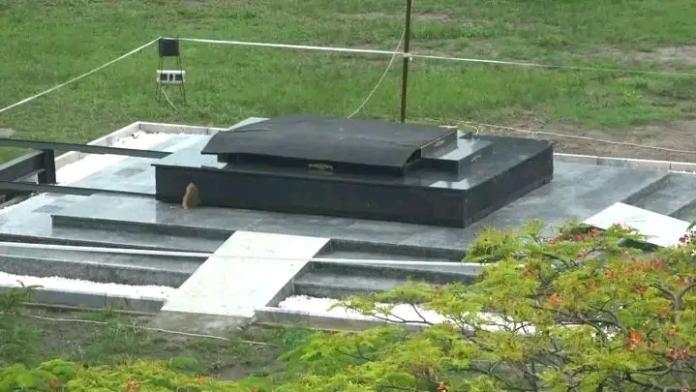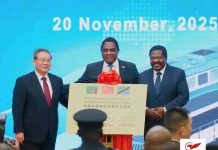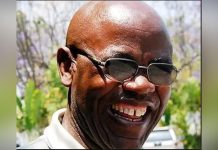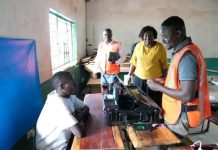Africa-Press – Zambia. The black marble lies untouched under an open sky. Its polished slab sealed but silent, waiting for a body that never arrived. A single brown leaf presses against the stone as if marking time. The grass around the platform grows uneven, and the ropes that should have guided mourners now frame an empty space.
It is a grave prepared for a president, but for 170 days it has held only stillness. Diamond TV, which captured this image, has set the country talking again.
This vacant tomb was designed as the final resting place of Zambia’s Sixth Republican President, Edgar Chagwa Lungu. It stands at Embassy Park, the national memorial reserved for those who once held the highest office. Five former heads of state are buried here, each lowered with military precision, national mourning, and full ceremony.
The site is a national shrine, officially designated in 2009 to provide a dignified and permanent home for presidential legacies.
The image raises natural questions because Zambia’s history with presidential funerals has followed a constant script. When Levy Mwanawasa died in 2008, the state flew his body home, laid him in state at Mulungushi International Conference Centre, toured the provinces, then buried him at Embassy Park on his birthday.
Fredrick Chiluba was buried there in 2011. In 2014, Michael Sata received similar state honours after dying in London. Crowds lined the streets, and the rituals were carried out without dispute.
Even Kenneth Kaunda, whose family resisted a state burial in 2021, was eventually interred at Embassy Park after a court affirmed that a former president’s burial is a matter of national interest. The judiciary has consistently held that these funerals are not private events. They are public obligations tied to history, memory, and the symbolism of the presidency.
Rupiah Banda, the fourth Republican President was buried there too in 2022.
However, the Lungu matter broke that pattern. He died in Pretoria on June 5th, 2025, and the Zambian government announced a full state programme that included repatriation, national mourning, and burial at Embassy Park. But the process stalled in South Africa amidst unending court battles between the Lungu family and the State.
This case shifted from ceremonial planning to legal contestation, leaving Zambia without clarity and leaving Embassy Park with an empty grave.
Pretoria court battles revived an old debate about who controls the burial of a former head of state. Zambia has no explicit statute that details the funeral rites or burial location of ex-presidents. What exists instead is tradition, political expectation, and judicial interpretation. In the absence of clear law, disputes become unavoidable when families and governments collide.
The result is what the country sees today. A monument built for a national farewell now stands unused long after the mourning period ended. It speaks to the reality of unresolved legal questions, strained politics, and a presidency whose final journey home remains suspended in foreign jurisdiction.
As the picture circulates, it stirs discomfort not because of the marble, but because of the uncertainty it reflects. Zambia has buried presidents before with unity and ceremony. This time, the country waits, and the grave waits with it.
For More News And Analysis About Zambia Follow Africa-Press







